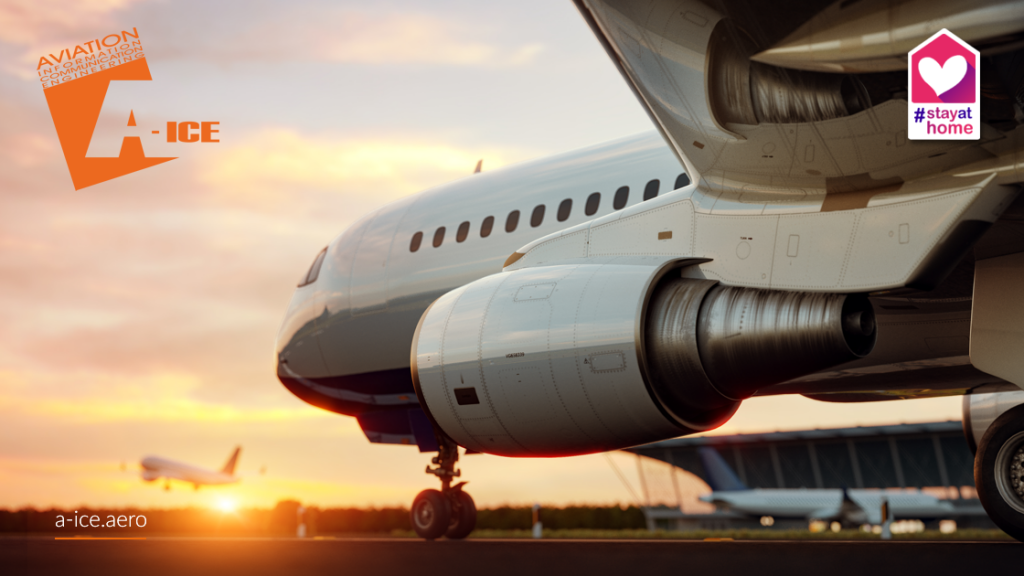Why aviation’s future depends on more than a silver bullet
| Company | A-ICE |
|---|---|
| Date | 19.05.2020 |
Over the past two months, the conversation in the air transport market has, rightly, been dominated by one subject: how to care for the health of passengers and operators in the presence of a pandemic.
We have heard every opinion on the subject, but the simple truth is that the civil aviation business cannot sustain itself economically if there is a requirement to eliminate the sharing of small spaces, either within the airport or the aircraft cabin itself.
For air travellers, close encounters with other people begin from the moment you approach the airport access door. After that point, there is a seemingly endless series of queues until you finally exit at your destination airport, whether that’s waiting for coffee, security screening, entering and leaving the aircraft, or joining fellow passengers at baggage claim.
In the context of COVID-19, we face a situation where our market – one that works on the basis of unavoidable ‘social rapprochement’ – must suddenly transform itself to ensure social separation. It is a task that seems fitting for Tom Cruise and his Mission Impossible team rather than those currently charged with regulation and defining new rules, who appear to be publishing tips and advice to gain time instead of managing the task of truly relaunching the market.
Let’s take an example that has universal implications. Some airlines, including Emirates, EasyJet, Alitalia and Delta, have bravely (or, it could be argued, recklessly) decided to artificially reduce the load-factor of their aircraft by leaving the middle seat empty. We then read about others, Ryanair predominantly, who consider it madness because 66% of load-factor is not a sufficient level to sustain low-cost carriers (ref: BBC – shorturl.at/opsRY).
How have official organisations responded? EASA appears to support Ryanair’s view, confirming in a bulletin that the HEPA filters on board the aircraft are able to trap the virus (ref: EASA – shorturl.at/cnIVX). Separate guidance from IATA recommends that airlines distance passengers on board as much as possible (ref: IATA – shorturl.at/stDQ6) but introduces confusion by also making the contradictory statement that they “do not recommend restricting the use of the ‘middle seat’ to create social distancing while onboard aircraft” (ref: IATA – shorturl.at/PQ045).
The only possible consequence for the absence of serious coordinated regulation across both airports and airlines is an undermining of the sustainability of the air transport market as a whole. The result is disorientation and immobility instead of rapid reaction to the emergency. Investment plans cannot be drawn up without strong reference points.
All this makes it clear that these bureaucratic elephants will not be able to shape a future for aviation that can be accepted by all stakeholders. The differences are too great, whether thinking about traditional and low-cost carriers separated by the middle seat issue or large and small airports divided on how to manage passenger flow at departure and arrival within a finite amount of space.
These two macroscopic points just highlight the difficult and potentially embarrassing situation facing regulators, who are charged with issuing overarching rules that may bring disadvantages to some stakeholders. And if universal standards are not achievable, the only feasible choice is to let the market evolve by itself.
It is up to the industry to take the helm. It must draw on its own research and development, rethink how current technologies can be applied to new scenarios, and modulate ideas and solutions to the needs of various parties. And time is of the essence – Eurocontrol has already registered a minor increase in flights in Europe since the last week of April 2020 and the risk of not being ready at the right moment will continue to grow.
This means it will be essential for suppliers to work more closely than ever with airport operators, airlines and others in the supply chain. For A-ICE (https://www.a-ice.aero/), the value in our understanding of technology and specialist experience in the aviation industry remain undiminished, but it is our skills in integration that will be brought to the fore. Decisions will need to be defined less by factors such as cost and traffic, and more on the fundamentals of infrastructures, dimensions and spaces, with the requirement to reconfigure and tailor systems according to specific needs.
So, while there may be an absence of truly universal industry standards, it’s clear the industry must at least adopt a collective approach based on adaptability and innovation if we are to achieve the shared vision of a new future.

Contact
00071, Pomezia (Rome) ITALY
-
Branches
Milan: Viale Enrico Forlanini 23, 20134
Milano, ITALY
-
USA: 1140 3rd Street, N.E., Washington
District of Columbia, 20002, USA
-
London: 17 Carlisle Street, 1st Floor, London
England, W1D 3BU, UNITED KINGDOM
-
- Rome (HQ): +39 0690214421

